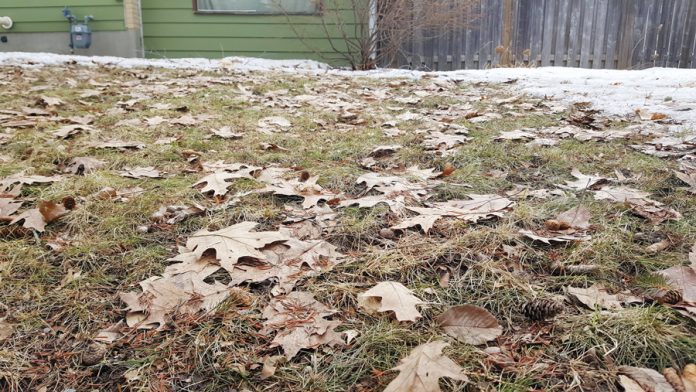By Anita Murray, All Things Home
If the changing seasons has you itching to tackle your spring yard cleanup, hold off. This is one time when being neat and tidy can do more harm than good and adopting a lazy gardener attitude will earn you top marks.
Why? Two reasons:
Your lawn is in a delicate state.
Beneficial insects that overwinter in your garden detritus are not yet ready to be on their merry way.
Your lawn
“Walking on soggy lawns is not recommended for quite a while after the snow melts as it compacts the soil and collapses the air pockets, or pores, necessary to promote good drainage and to allow microscopic plant roots to meander and grow,” says Anne Gadbois, an experienced gardener and past president of the West Carleton Garden Club.
She recommends keeping people and pets off the lawn for at least two weeks after snow has disappeared and it is dry. “This will be hard but beneficial in the long run.”
Your lawn knows when to come back on its own, Gadbois says.
The best lawn for a healthy ecosystem that attracts pollinators is a diverse one, Gadbois says. That means drought-tolerant grass (red fescue is a prime choice), along with a mix of other grasses, clover, creeping perennials such as thyme, ajuga, violets, sedums, and even dandelions.
Although seen as a scourge by many homeowners who love a well-manicured lawn, dandelions are one of the first spring flowers to feed bees and other pollinators. “They disappear in a few weeks anyways, but these are crucial weeks at the beginning of spring when the perennials in our gardens are not yet blooming.”
Your garden
Hold off on cleaning up your garden until the daytime temperature is consistently at least 10 C, says Master Gardeners of Ottawa-Carleton. Master Gardeners is a volunteer group of experienced gardeners who have studied horticulture and continue to upgrade their skills through technical training. With this training, they provide unbiased and free horticultural advice and expertise to home gardeners.
Although not a master gardener herself, Gadbois was affiliated with the group and adheres to its example of following good gardening practices.
Waiting until the temperature is above 10 C “comes down to the ecosystem and waiting for our insect friends to wake up and emerge from the detritus of last year’s growth where they, and their eggs and larvae, have been overwintering,” she says. “Cleaning up too soon and dumping the remains in the recycling bin can deprive our gardens of beneficial insects over time. Best to let them emerge naturally and get to work at their own pace.”
If you can’t stand the mess and absolutely must remove dead matter from the perennial garden, then pile it very loosely on a compost bin or out-of-the-way corner of your yard so that the insects can continue to rise from their torpor and emerge naturally.
While you wait
“There is so much more to do in a garden than raking over the next few weeks,” Gadbois notes.
Overgrown shrubs can be pruned and shaped (just remember not to tackle those with spring flowering branches right now), driveways and paths can be cleared, garden sheds can be organized and cleaned up, garden tools can be rehabilitated and seedlings can be started.
Then you’ll be ready to go once your garden and your yard are ready for you.
Anita Murray is former Homes Editor of the Ottawa Citizen and co-founder of AllThingsHome.ca, Ottawa’s trusted resource for home buyers and homeowners.

